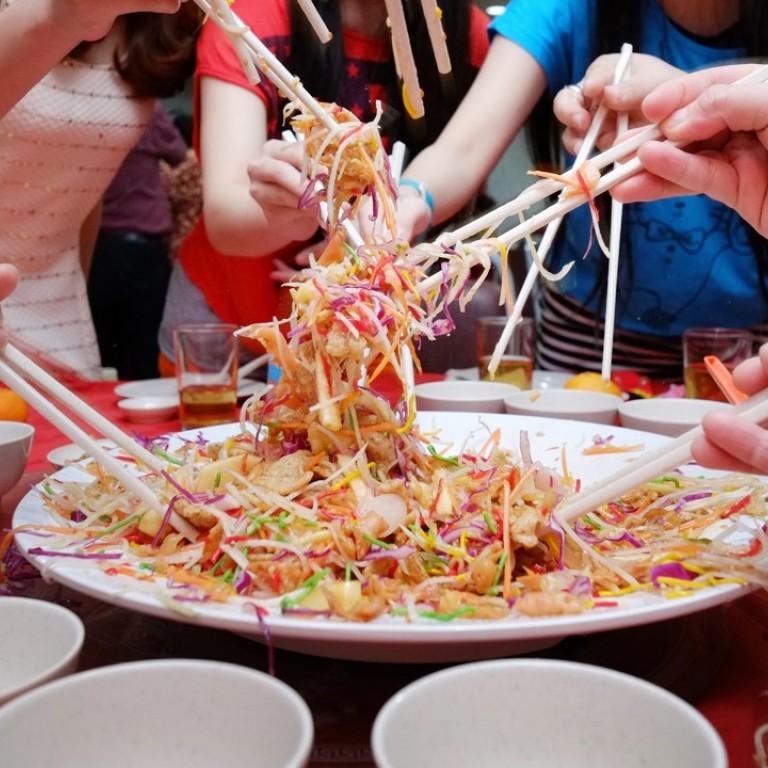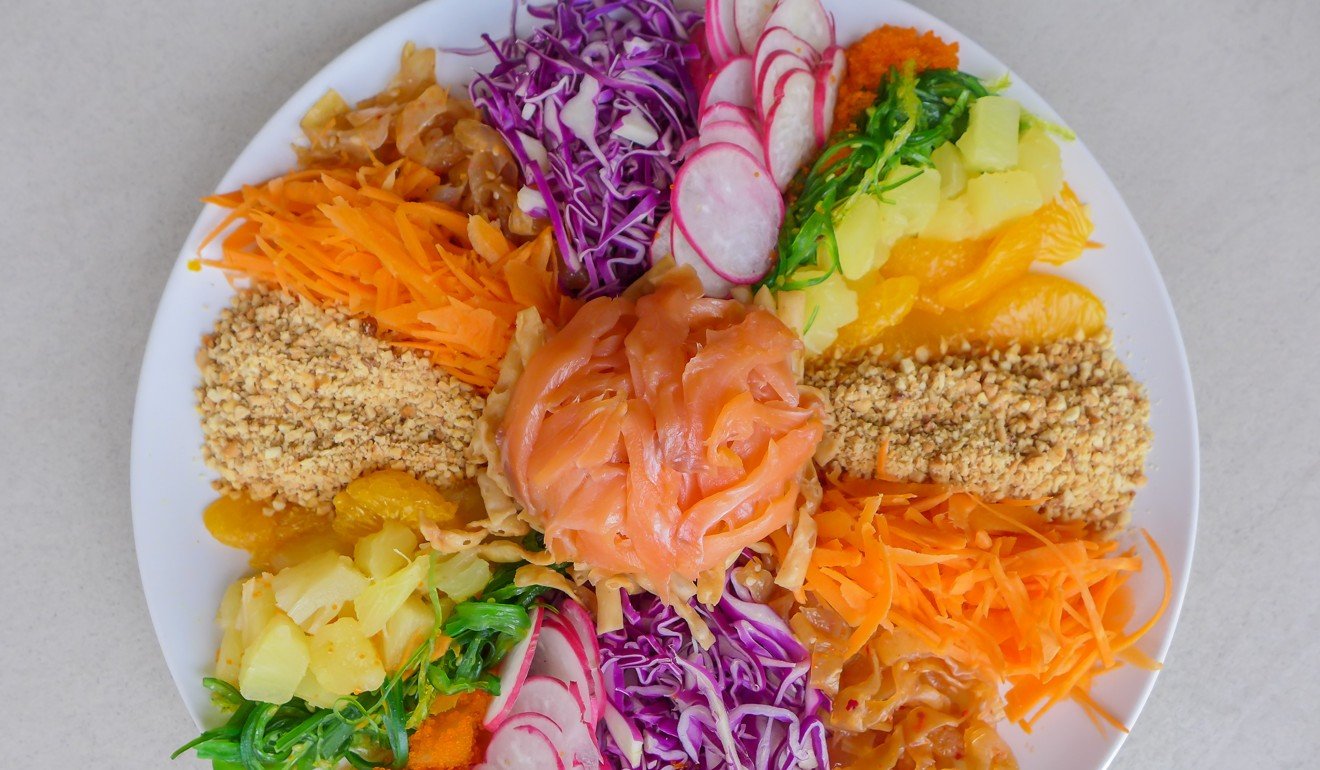
Prosperity toss: where the Chinese New Year dish yu sheng comes from
The festive tradition involving raw fish and the dramatic tossing of ingredients can be traced back to Singapore and its “Four Heavenly Kings” of the 1960s
Until recently, when Hongkongers talked about “yu sang” (“raw fish”), they would have meant the Japanese interpretation – sashimi. But these days, around Lunar New Year, the term is also used to refer to the festive Singaporean dish that also goes by the names yu sheng, lo hei and prosperity toss.
In Singapore, yu sheng is a festive salad of sorts – a large platter of colourful, finely cut or grated ingredients, such as carrot, cucumber, white radish, pickle and, of course, raw fish, along with an array of condiments such as sesame oil, plum sauce, crushed peanuts, crisp deep-fried wonton skins, pepper and cinnamon.
Home cooks will have their own interpretations, with ingredients differing according to taste. And restaurants in Singapore have come up with decadent versions featuring the likes of abalone and gold leaf.

“It’s great also because it’s really communal – even the preparation – everyone gets in on it, arranging it nicely, and then everyone will hold an ingredient and have something auspicious to say about it as they add it to the dish.”
The name of each ingredient is usually a homophone of a word that is part of an auspicious saying; for instance, “yu” is the pronunciation for both the words “fish” and “abundance” – the latter being part of the greeting “nian nian you yu” (“may you have an abundance [of whatever you desire] every year”).
As the ingredients are added, diners recite the corresponding saying, with exaggerated tossing using their chopsticks. It’s said that the higher one tosses, the happier one will be, which comes from another homophone – in Cantonese, “lo hei” means to “toss”, and “hei” also means happiness.
[Yu sheng is] great also because it’s really communal – even the preparation – everyone gets in on it, arranging it nicely, and then everyone will hold an ingredient and have something auspicious to say about it as they add it to the dish
The tradition of yu sheng is practised in Singapore mostly among those of Cantonese origin. In Hong Kong, however, raw fish from a Cantonese kitchen is almost unheard of. One of the earliest records of the Cantonese eating raw fish can be found in the book Sui Tang Jia Hua, by Tang-dynasty scholar Liu Su, who wrote about life and customs in the Sui (581-618) and Tang (618-907) dynasties.
In some cities in Guangdong, such as Chiuchow, Foshan and Jiangmen, yu sheng is still popular, but consists of a smaller spread of ingredients than its Singaporean cousin, and is eaten year-round, without the dramatic tossing.
Many Chinese in Singapore are descendants of Cantonese migrants from these port cities, which could explain how the dish made its way down from the South China Sea. Lee, who is in his 30s, says the Lunar New Year tradition has been around for as long as he can remember.
Although now popular across Malaysia and the Lion City, according to Singapore’s National Library Board, the invention of Lunar New Year yu sheng, with its plum sauce, bright colours and group tossing, is credited to four Cantonese chefs popularly known as the “Four Heavenly Kings” – Tham Yew Kai, Sin Leong, Lau Yoke Pui and Hooi Kok Wai, in the 1960s.
All were mentored by Luo Chen, a Hong Kong-born chef who headed the legendary Cantonese restaurant at Singapore’s now-closed Cathay Hotel. Even after they each branched out to open some of Singapore’s most iconic Cantonese restaurants, they would get together to create dishes, including the festive version of yu sheng.
It is thought that the large platter and communal tossing made it a fun group activity that perfectly fits the joyous atmosphere of the Lunar New Year, which gradually made it a tradition in Singapore and beyond.











